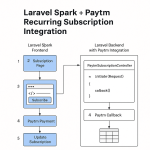Limited Time Offer!
For Less Than the Cost of a Starbucks Coffee, Access All DevOpsSchool Videos on YouTube Unlimitedly.
Master DevOps, SRE, DevSecOps Skills!

Code Security refers to the practice of protecting software code from vulnerabilities and threats throughout its development lifecycle. It involves implementing security measures to identify and fix vulnerabilities, ensuring that the code is robust against attacks and breaches. Secure coding practices aim to minimize the risks associated with malicious exploitation, data breaches, and other security threats by integrating security protocols into the software development process (Vulcan Cyber) (OWASP).
Advantages of Implementing Code Security
- Enhanced Protection: Prevents unauthorized access, data breaches, and cyber-attacks by identifying and addressing vulnerabilities early in the development cycle (Vulcan Cyber).
- Cost Savings: Reduces the cost of fixing security issues by identifying and mitigating them during the development phase rather than after deployment (Vulcan Cyber) (OWASP).
- Compliance: Helps in meeting regulatory requirements and industry standards, thus avoiding legal issues and penalties (Vulcan Cyber).
- Improved Reputation: Enhances the organization’s reputation by ensuring the security and reliability of its software products, thereby gaining customer trust (Vulcan Cyber).
Use Cases of Code Security
- Financial Services: Protects sensitive financial data and transactions from breaches and fraud, ensuring compliance with financial regulations.
- Healthcare: Secures patient data and medical records, preventing data leaks and ensuring compliance with health information privacy regulations.
- E-commerce: Protects customer data and payment information from cyber-attacks, ensuring secure transactions and customer trust.
- Government: Safeguards critical infrastructure and confidential information from cyber threats, ensuring national security (Vulcan Cyber) (Relevant Software).
List of Tools and Services for Code Security
Proprietary Tools:
- Checkmarx: Offers static application security testing (SAST) and interactive application security testing (IAST) tools to identify vulnerabilities in code.
- Veracode: Provides comprehensive application security testing solutions, including SAST, dynamic application security testing (DAST), and software composition analysis (SCA).
- Fortify: Delivers enterprise-grade application security solutions, offering SAST and runtime application self-protection (RASP).
Open Source Tools:
- OWASP ZAP: A widely used DAST tool for finding vulnerabilities in web applications.
- SonarQube: An open-source platform that performs automatic reviews of code to detect bugs, vulnerabilities, and code smells.
- Brakeman: A static analysis security tool for Ruby on Rails applications that scans the code for security vulnerabilities.
- Bandit: A tool designed to find common security issues in Python code.
- ESLint: A tool for identifying and fixing problems in JavaScript code, including security vulnerabilities (Vulcan Cyber) (Relevant Software) (OWASP).
These tools and practices are essential for maintaining a secure software development lifecycle, helping organizations to proactively manage security risks and ensure the integrity of their software products.



